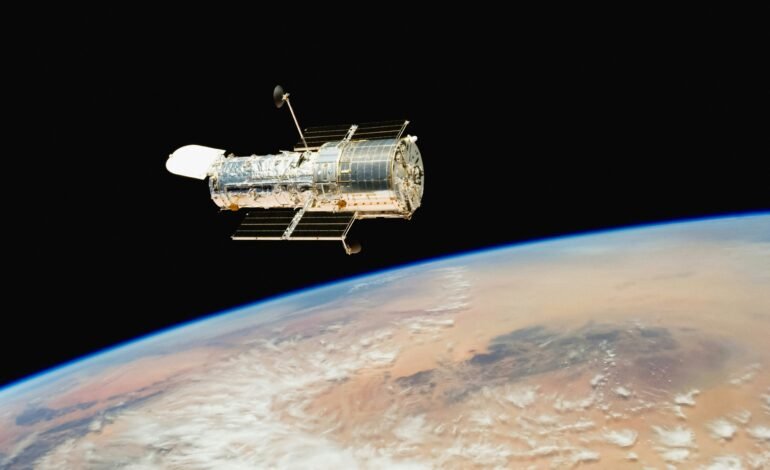Space-connected mobile phones: SpaceX's multi-million dollar move
The initiative seeks to bring coverage to remote areas without terrestrial antennas, benefiting millions of users without signal.

Photo of NASA Hubble Space Telescope in Unsplash
Elon Musk's SpaceX company has closed a historic deal worth approximately US$1.4T17 billion with EchoStar to acquire key wireless spectrum that will allow it to offer direct-to-cellphone mobile services from satellites, without the need for ground-based antennas. This ambitious project aims to fill "signal deserts" in remote areas where conventional telephones don't work.
The agreement, which is confirmed by a cash and stock payment, includes AWS-4 and H-block licenses, currently owned by EchoStar. It also provides for some Boost Mobile customers, a brand under EchoStar, to soon benefit from direct satellite connectivity.
“Direct to Cell” innovation: signal from space without antennas
SpaceX's bet is focused on its service called Direct to Cell, which will allow compatible smartphones to connect directly to Starlink satellites, eliminating the need for ground-based towers for these connections. Features will include voice calls, text messaging, internet in remote areas, social media, and video, although speed and quality will depend on multiple technical factors.
Currently SpaceX already has about 600 satellites supported assets, of the approximately 8,000 it expects to deploy. This provides a foundation for scaling services, although full implementation of the system will take time.
Why now? SpaceX's context and competition
SpaceX has already collaborated with T-Mobile since 2022 to fill gaps in mobile coverage via satellites in the United States. This new move by Elon Musk seeks to give the company greater independence, as controlling its own spectrum will reduce its dependence on agreements with terrestrial telephone operators.
Rivals such as AST SpaceMobile, Amazon with its Project Kuiper, and Globalstar are also pursuing similar direct satellite connectivity services, making this announcement a key milestone in technological competition. Furthermore, the operation is under scrutiny by the U.S. Federal Communications Commission (FCC), which had already investigated EchoStar for failing to effectively use some of its wireless frequencies.
Potential impacts and challenges
- Rural or remote users They will benefit, as they could have mobile service where there was no signal before.
- Traditional operators They may be pressured to improve their coverage or partner with satellite services to avoid being left behind.
- Technical challenges: device compatibility, latency, signal quality, resistance to adverse weather conditions.
- Regulatory: approval of licenses, auditing of spectrum use, ensuring that there is no interference with other services.
- Economical: Launching and maintaining satellites is expensive; furthermore, the prices paid by end users will be key to making it a viable business.
SpaceX spoke of concrete examples
- Users of Boost Mobile They are among the first that could use Starlink for calls, messages and data even without a traditional antenna.
- In rural areas of the U.S., where there is no coverage from regular cellular networks, this technology could enable emergency calls or messages, which until now relied on special satellite radios or expensive emergency services.
- Areas outside of cities in countries with difficult geography (mountains, islands, deserts) could be transformed if this service is extended globally.
For more stories like this, follow More Latin.
Sources:
